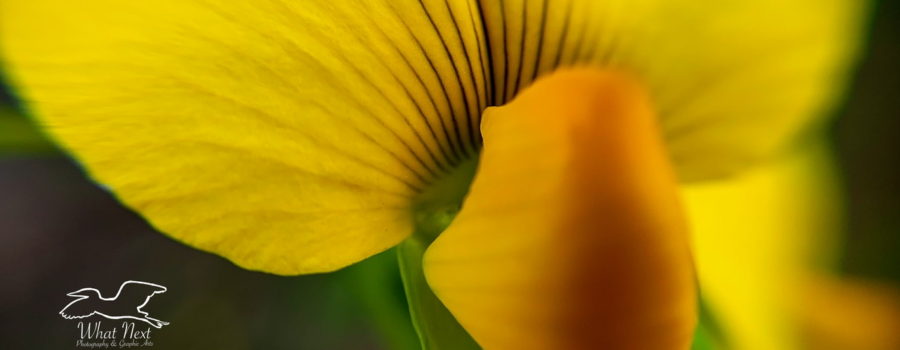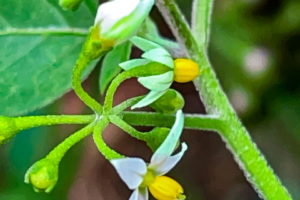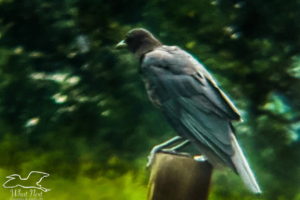Beautiful Showy Rattlebox is Non-native but Has Many Uses

The last few days here in central Florida have been cool and overcast, but despite this less than ideal weather, some of our local plants are beginning to grow again. One of the ones that I found growing on the roadside today when I went into town is the showy rattlebox (Crotalaria spectabilis). It’s not blooming yet, but it’s little green sprouts with alternate, simple leaves are popping up. It won’t be long before it starts to bloom because one of it’s selling points as an ornamental is it’s long blooming period which can last from February through November or even into December in south Florida.

Showy rattlebox is also know by quite a few other common names such as Indian rattlebox, rattlebox, cat’s bell, showy crotalaria, yellow crotalaria, silent rattlepod, and greater rattlepod. Most of those names relate directly to the inflated pods, that when mature harden letting the seeds inside rattle when shaken. This plant is native to southeastern Asia, but has become naturalized into most of the tropical and subtropical world. It is a member of the pea family (Fabaceae) and was brought into the new world to be used for several reasons. The most common use for this plant has been as a green manure or fertilizer. Like many members of the pea family, showy rattlebox fixes nitrogen into the soil and grows very well in sunny, disturbed areas. It is often planted in sandy, poor soils and later plowed under to enrich the soil before planting other crops. It’s also great for stabilizing eroded areas so that other, less hardy vegetation can later move in.

Showy rattlebox is also very much loved as an ornamental plant because of it’s large, showy yellow flowers. Showy rattlebox tends to be notably taller with larger flowers than native crotalaria species. Showy rattlebox also has quite a few medicinal uses, and some people even eat it! An extract made from the whole plant is used to treat scabies and impetigo. It can also be used as an antiseptic on cuts, abrasions, and minor burns or as a treatment for intestinal parasites. In Asia, the plant stems are used to produce a sturdy fiber for use in ropes. For those that are willing to eat this potentially toxic plant, the leaves and flowers are said to make a good potherb or the flowers can be pickled and used in salads or as a snack.

For certain livestock and even some wildlife (as well as people) this plant can be toxic if eaten in large volumes. It contains alkaloids, which can cause liver damage and even death. Chickens, turkeys, quail, pigs, horses, and cattle seem to be the most sensitive, while sheep and goats, are less sensitive and must eat quite a bit to be poisoned. Although some animals can be poisoned by this plant, others thrive on it. Certain types of moths and butterflies lay their eggs on several types of crotalaria plants, including showy crotalaria. The larvae feed on these plants and ingest the alkaloids which gives them a bitter taste and makes them undesirable for predators. The best known of these is the ornate bella moth (Utetheisa ornatrix).

Once again we are faced with a plant that is definitely not native to this area or even this country and has the potential to become quite invasive. Add to that the fact that it is toxic to livestock and even some types of wildlife, and it would be easy to say this is a bad plant to have around. But as is always the case, there is another side to the story. The plant also has many uses in agriculture, as food, and as medication. Additionally, it’s helpful to some other types of wildlife, so based on these facts, the plant is good to have around. I suspect that it has been here long enough and is hearty enough that getting rid of it at this point would be impossible, even if we wanted to. Instead, I think that the key is to use it where and when it’s useful, but to take precautions to keep it from getting out of control.





Recent Comments